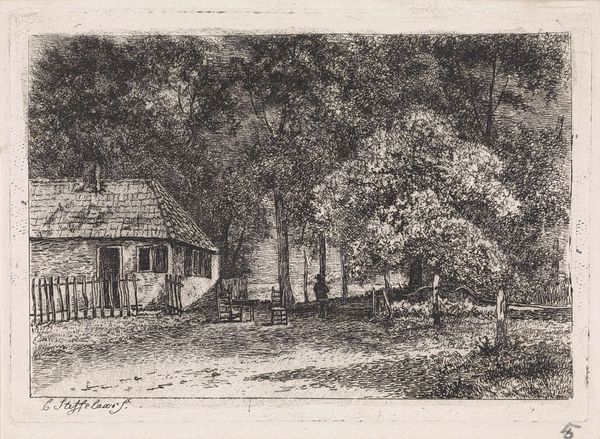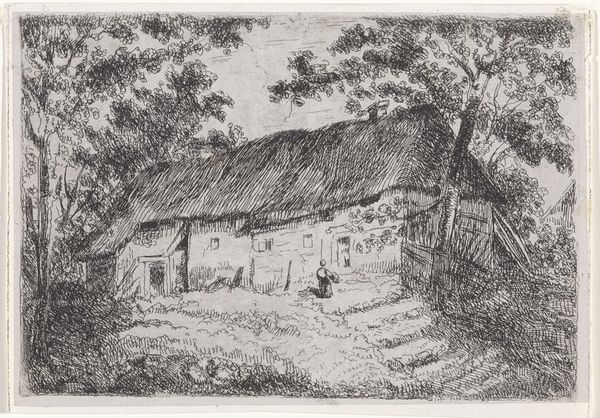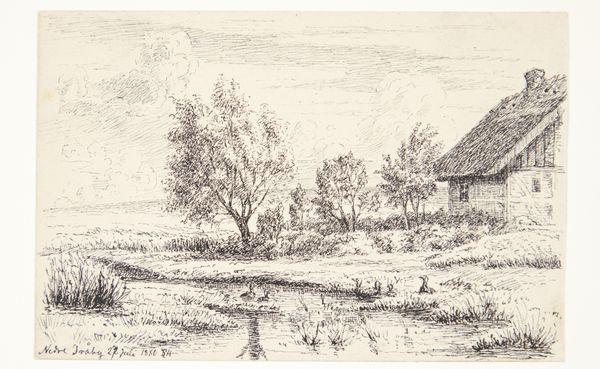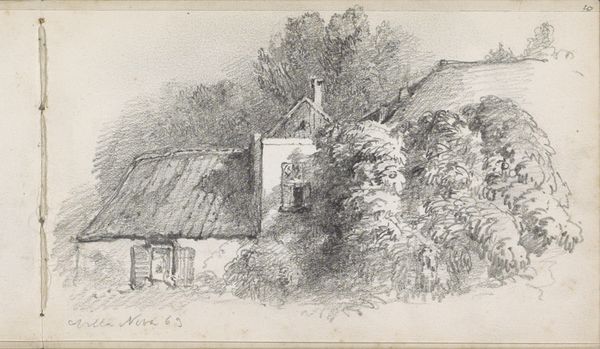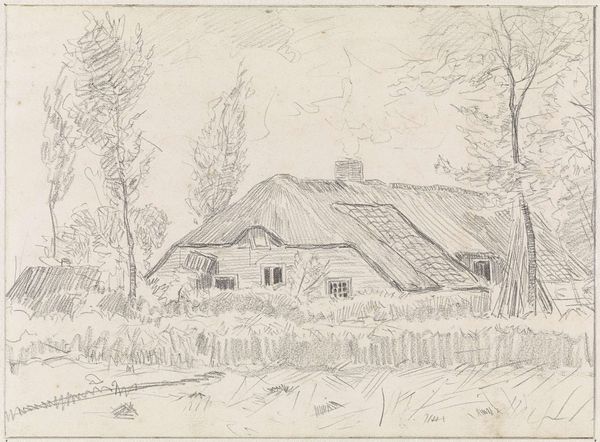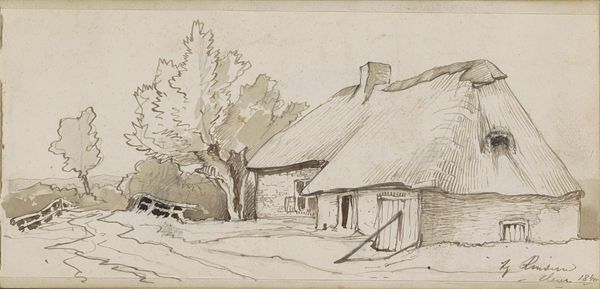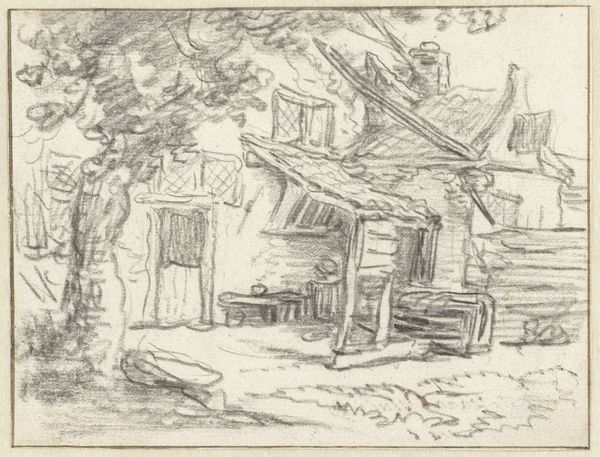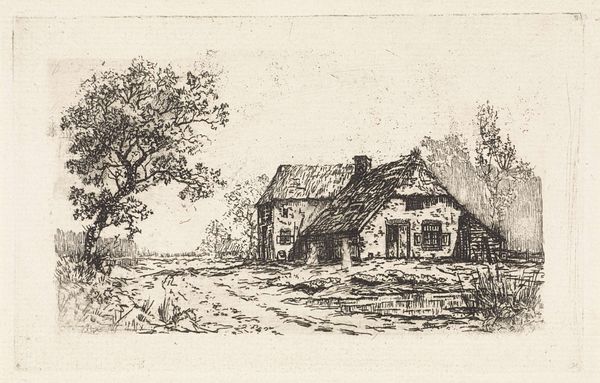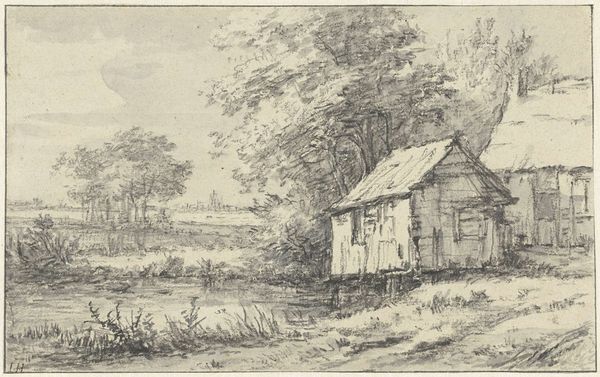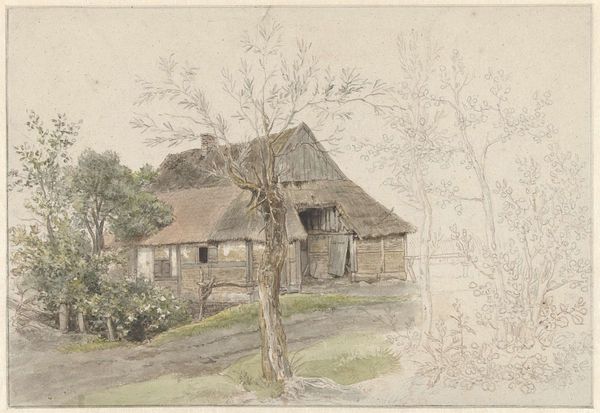
drawing, ink
#
drawing
#
dutch-golden-age
#
landscape
#
etching
#
ink
#
genre-painting
#
realism
Dimensions: height 223 mm, width 266 mm
Copyright: Rijks Museum: Open Domain
Editor: Here we have Pieter Ernst Hendrik Praetorius' "Farmhouse with trees, near Meerenberg in Bloemendaal," created in 1847, using ink. I’m immediately drawn to the detail in the roof and the sketchy feel of the foliage. What’s your take on this seemingly simple landscape? Curator: It's deceptive, isn't it? At first glance, it presents as a straightforward landscape, but situating it within the context of the 19th-century Netherlands reveals something more complex. Genre paintings had become vehicles to idealize rural life, a perspective promoted and consumed by urban, bourgeois audiences. Editor: Interesting. So, is this drawing a part of that trend? Was Praetorius playing into that romanticized vision of rural life? Curator: Precisely. The “realism” in the artwork might have to do more with the social agenda of the artist to align to the taste and commercial pressure from galleries or individuals, who may have preferred depictions of humble idylls than depictions of socio-economic disparity. But do we see signs that problematize a romantic view? Editor: Well, the farmhouse does seem rather worn. The composition itself places the farm very close, with an intimate feeling. Curator: Good eye. That proximity hints at the everyday, unglamorous aspects of farm life that the artist has attempted to capture within that popular idealized theme. It seems less like propaganda for rural life, and closer to reality? What does it communicate to contemporary audiences in its display? Editor: So, viewing this piece in a gallery today, we aren't just looking at a landscape, but also a carefully constructed representation of Dutch society at that time, and it makes me want to think harder about the artist's intent and the patron's expectations. Curator: Precisely. Considering this piece within its historical context, from production to modern display, really enriches our viewing experience. It asks us to see art as active participant in social discourse, and not passive recorder of events.
Comments
No comments
Be the first to comment and join the conversation on the ultimate creative platform.
